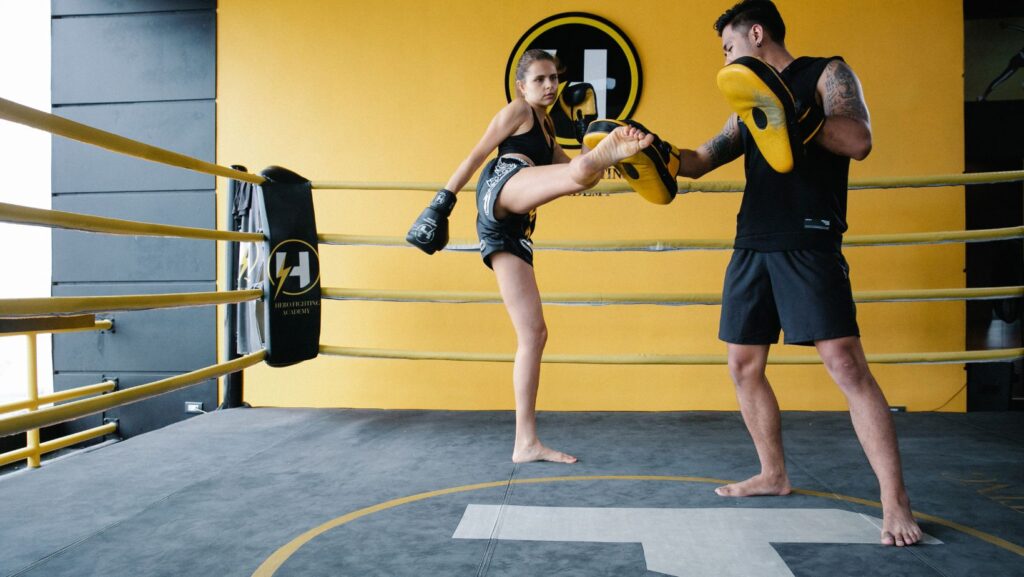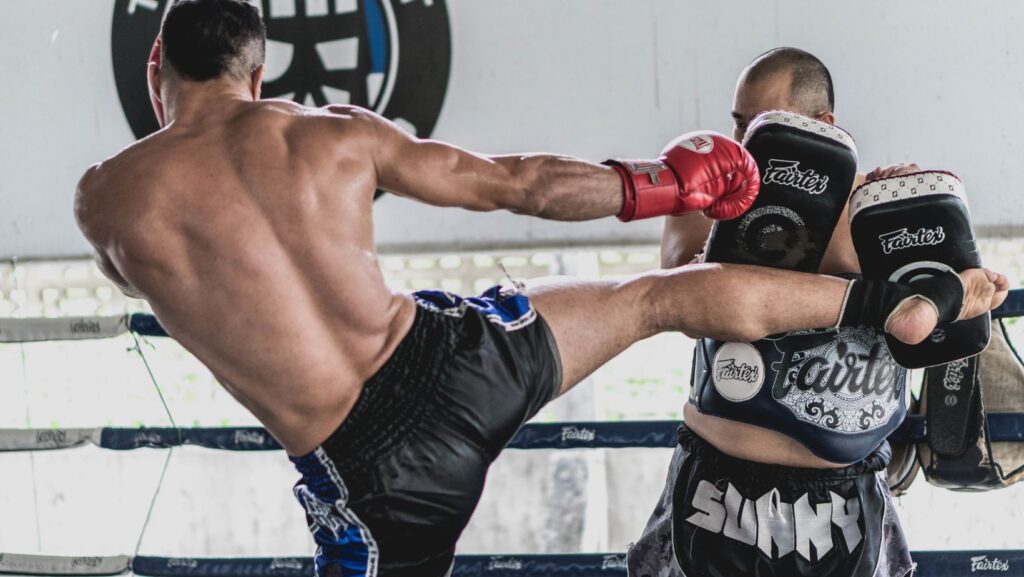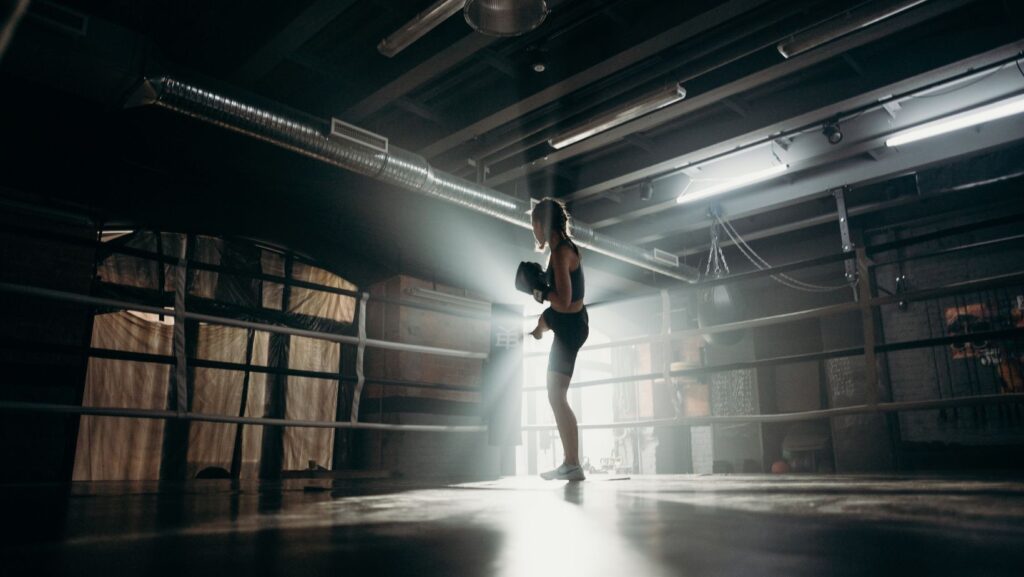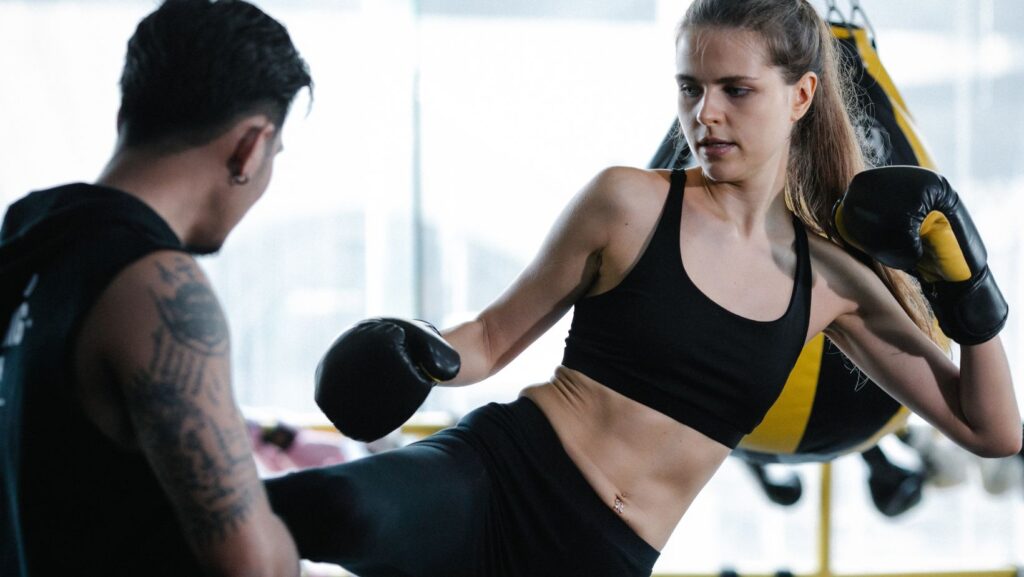Training Kickboxing Techniques

In the world of martial arts, kickboxing stands out as a dynamic, full-body workout that combines power, agility, and mental toughness. Whether you’re a seasoned pro or a beginner eager to learn, mastering kickboxing techniques can transform your fitness journey.
This article will guide you through the essentials of kickboxing training, from foundational moves to advanced techniques. It’s not just about the kicks and punches; it’s about understanding the strategy behind each move. So, lace up your gloves and get ready to dive into the exhilarating world of kickboxing.
Understanding Kickboxing Techniques
To delve deeper into the captivating domain of kickboxing, let’s examine the techniques starting from the fundamentals to the complex maneuvers.
The Basics of Kickboxing

Kickboxing encapsulates fundamental techniques that form the core of this martial arts discipline. Jab, uppercut, hook, front kick, and roundhouse kick provide the groundwork necessary for a solid kickboxing foundation.
- Jab, the quickest and least powerful punch, involves a straight strike with the leading hand.
- Uppercut, a vertical punch thrown with the rear hand, targets the opponent’s chin.
- Hook involves a rounded punch targeting the side of the opponent’s body or head.
- Front Kick, employing the rear leg, targets the middle to high sections of an adversary’s body.
- Roundhouse Kick, a powerful sweeping motion, targets the legs, body or head, depending on the practitioner’s flexibility.
Remember, the key to mastering these elementary strikes and kicks lies in regular practice and maintaining good form.
Advanced Techniques
Once a trainee has polished the basics, it’s high time to introduce advanced techniques into the mix. Techniques such as the spinning backfist, jumping roundhouse kick, and the slip bob and weave augment the intensity and effectiveness of the training.
- Spinning Backfist, a circular strike using the back of the fist, requires swift footwork and precise timing.
- Jumping Roundhouse Kick, a high impact aerial kick using the rear leg, targets an opponent’s head.
- Slip Bob and Weave, a defensive strategy, involves active head movement to avoid incoming strikes.
These advanced techniques not only diversify the kickboxing arsenal but also underscore the importance of agility, accuracy, and power in kickboxing. As always, sustained practice, under the guidance of a skilled instructor, remains crucial for mastering these complex maneuvers.
Essential Gear for Training Kickboxing Techniques
Mastering the art of kickboxing demands more than just rigorous physical training and intense mental focus. It also requires reliable gear optimized for both safety and performance. The choice of gear significantly impacts the kickboxer’s technique and safety during training.
Choosing the Right Gloves

Selecting the right gloves plays a crucial role in a kickboxer’s training regimen. Gloves not only safeguard the hands from immediate injuries – including fractures, dislocations, and bruising – but they’re also instrumental in long-term wrist and hand health. As one sizes up kickboxing gloves, the primary considerations are weight, material, and design.
The weight of gloves directly relates to the level of padding and overall protection. For training, 16oz gloves are preferable, as they provide maximum padding. Glove material contributes to durability and comfort. Genuine leather gloves are ideal for their durability, but synthetic, such as vinyl or PU, may suffice for beginners due to their budget-friendly price points. As for design, variations primarily exist in the wrist closure system, such as lace-ups or velcro, which offer either superior fitting or convenience, respectively.
Importance of Protective Gear
Apart from gloves, there’s an array of protective gear a kickboxer must employ during training to ensure personal safety. Headgear, shin guards, mouth guards, and chest protectors fall into this category.
Headgear cushions the blow to the head, reducing the risk of traumatic brain injuries. A mouth guard protects the teeth and lips during a bout, and it also helps prevent jaw injuries. A chest protector wards off potential fractures and internal injuries. It’s crucial, particularly for female practitioners. Shin guards, on the other hand, safeguard the tibia and the instep – sections of the leg that are frequently active in kickboxing.Notably, protective gear is n’t merely about safeguarding against injuries. It also supports sustained practice by reducing post-training muscle soreness, accelerating recovery, and extending the lifespan of a kickboxing career.

